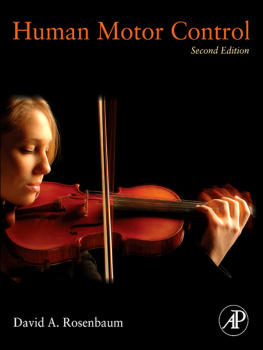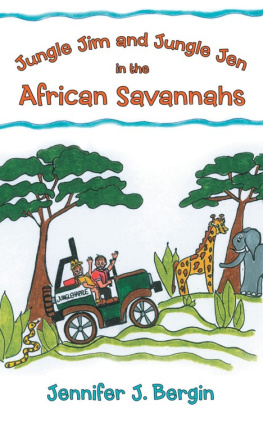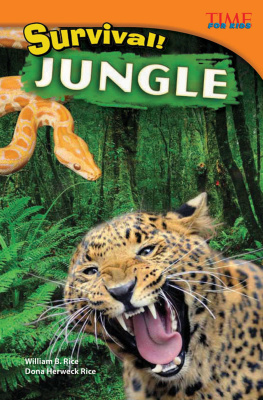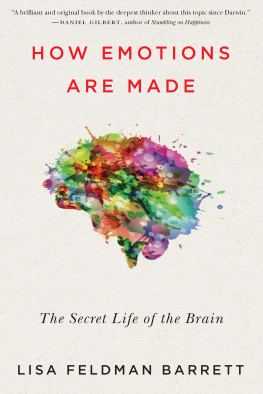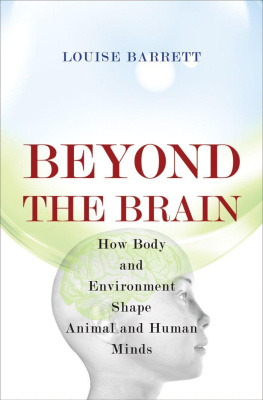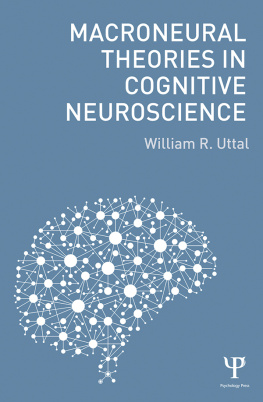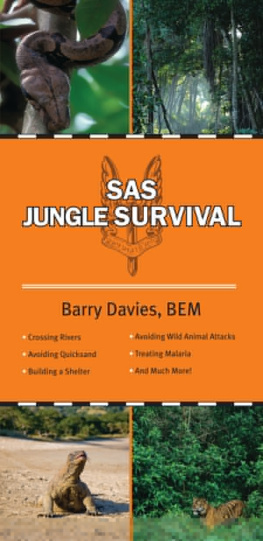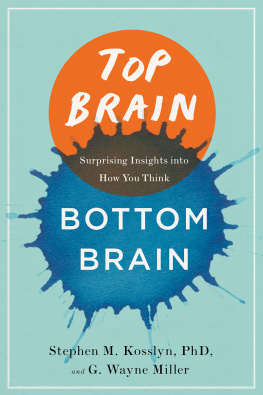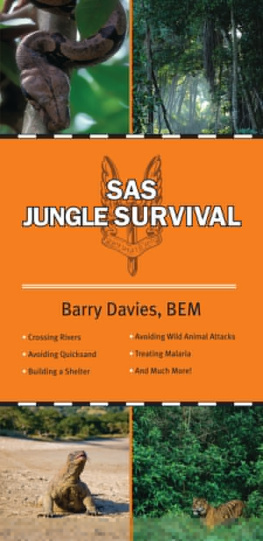Its a Jungle in There
How Competition and Cooperation
in the Brain Shape the Mind

DAVID A. ROSENBAUM


Oxford University Press is a department of the University of Oxford.
It furthers the Universitys objective of excellence in research, scholarship,
and education by publishing worldwide.
OxfordNew York
AucklandCape TownDar es SalaamHong KongKarachi
Kuala LumpurMadridMelbourneMexico CityNairobi
New Delhi Shanghai TaipeiToronto
With offices in
ArgentinaAustriaBrazil ChileCzech RepublicFranceGreece
GuatemalaHungaryItalyJapanPolandPortugalSingapore
South KoreaSwitzerlandThailandTurkeyUkraineVietnam
Oxford is a registered trademark of Oxford University Press
in the UK and certain other countries.
Published in the United States of America by
Oxford University Press
198 Madison Avenue, New York, NY 10016
Oxford University Press 2014
All rights reserved. No part of this publication may be reproduced, stored in a retrieval system, or transmitted, in any form or by any means, without the prior permission in writing of Oxford University Press, or as expressly permitted by law, by license, or under terms agreed with the appropriate reproduction rights organization. Inquiries concerning reproduction outside the scope of the above should be sent to the Rights Department, Oxford University Press, at the address above.
You must not circulate this work in any other form
and you must impose this same condition on any acquirer.
Library of Congress Cataloging-in-Publication Data
Rosenbaum, David A.
Its a jungle in there : how competition and cooperation in the brain
shape the mind / David A. Rosenbaum.
p. cm.
Includes bibliographical references and index.
ISBN 9780199829774
1.Cognitive psychology.2.Brain.3.Neuropsychology.I.Title.
BF201.R67 2014
153dc23
2013028959
135798642
Printed in the United States of America
on acid-free paper
Contents
Most people wonder what makes them tick and what makes others tick, tock, or whatever else they do. We humans are naturally curious, and that curiosity extends to our desire to understand ourselves and others. That same curiosity led me to become a psychologist, specializing in the branch of psychology known as cognitive psychologythe science of mental function. Cognitive psychology is mainly concerned with basic processes of learning, thinking, perceiving, acting, and feeling. In recent years, cognitive psychology has formed tighter links with neuroscience than it had in the past. This is a healthy shift, reflecting an appreciation that the study of the mind is inseparable from the study of the brain. Increasingly, cognitive psychologists have seen that cognitive psychology, like psychology more broadly, should be viewed as a branch of biology.
This book takes that perspective to its logical conclusion. The argument offered here is that the overarching theory of biology, Darwins theory, should be the overarching theory of cognitive psychology. The way I mean this is a bit different from the currently popular view that mental and behavioral phenomena can be explained in terms of our evolutionary past, a perspective known as evolutionary psychology. The approach offered by evolutionary psychologists is one I will discuss here, though only near the end of the book and only briefly because it is not central to my argument. What Ill focus on instead is the idea that Darwins insights apply to the inner workings of individual brains. The mind, I will argue, reflects competition and cooperation within the brain. The internal dynamics of such neural competition and cooperation give rise to the mind as we experience it.
Others have said similar things before, though they have focused mainly on the nervous system orat the other end of the reductionist continuumconsciousness. This book focuses on whats in between, on the kinds of basic mental phenomena that have been studied in the everyday world and, from there, in cognitive psychology labs. The mental phenomena discussed here are ones covered in cognitive psychology textbooks, of which there are many, and in cognitive psychology classes, of which there are still more. Yet such textbooks (and perhaps such classes) have lacked a theory within which, or around which, to organize and motivate the material. A theme might be offered every so often to summarize some aspect of the research, such as the maxim that the mind goes beyond the information given, a phrase used by Jerome Bruner in a 1973 book that helped launch cognitive psychology. But telling students that theyre inquisitive doesnt tell them much they dont already know. Having a guiding theory is more satisfying, both pedagogically and scientifically.
My realization that Darwins theory could be usefully applied to cognitive psychology came in a lecture I was giving while teaching Introduction to Cognitive Psychology at Penn State University, where I have been on the faculty since 1994. It occurred to me in the midst of the lecture that it would be useful to summarize the facts I was presenting with a single phrase: Its a jungle in there.
After I said this, I felt silly, like I had just said something that would come across as so cute, so juvenile, that the students would scoff at it. Yet after the words spilled from my lips, the students I thought were sleeping betrayed grudging signs of amusement, the students I thought were concentrating on crossword puzzles put down their pencils and looked up at me expectantly, and the students who always looked at me imploringlythe ones in the front who laughed at all my jokes no matter how poor the punch linessmiled more sincerely than usual.
Encouraged by the students responses, I found myself saying the same thing over and over again. (We professors are subject to reinforcement by students as much as the reverse.) Its a jungle in there, I repeated. The phrase became a mantra. I would describe a phenomenon and before I knew it, some student would raise his or her hand and say, Its a jungle in there, right? The fact that the quote applied so often and resonated so well with the students led me to think the jungle principle is a useful way to present cognitive psychology. I also came to feel that the principle deserved more than passing reference in one class taught at one university by one professor. It deserved to be disseminated more widely, not just to students who might find the concept useful as a portal to cognition, but also as a preface to a theory that my colleagues could contemplate.
To pursue the idea that the mind reflects Darwins drama, you have to allow that there are inner entities doing things that unwittingly affect their chances of survival. The thesis of this book, accordingly, is that minds are inhabited by such entities. To liven up the discussion, Ill often refer to these entities as demons, elves, imps, gnomes, and other similar terms. Of course, I mean these only as metaphorical expressions. The cranial creatures to which Ill refer eke out their livings by exciting or inhibiting their neighbors, doing so with no notion of their role in the larger ecosystem of which theyre a part. Different members of this neural tribe play special roles by virtue of where they happen to live in the neural neighborhood. Those on the sensory shoreline are specialized for sensing. Those on the motor shoreline are specialized for acting. Those in the interior are specialized for other functions, less directly tied to sensing or to acting but to functions in between. When I speak of neural gnomes, I never mean to ascribe to them intentions or awareness of what they are about. They are, simply, dumb mechanisms surviving or not depending on their fits to the environments they occupy.


